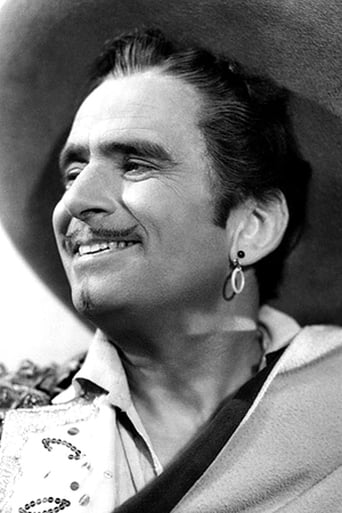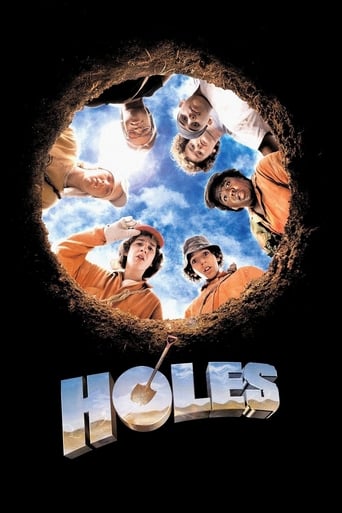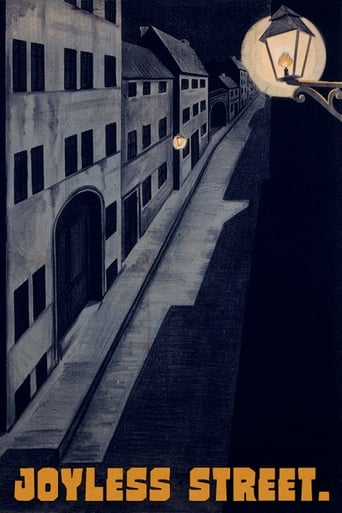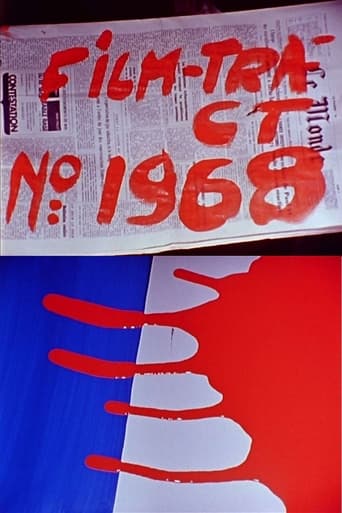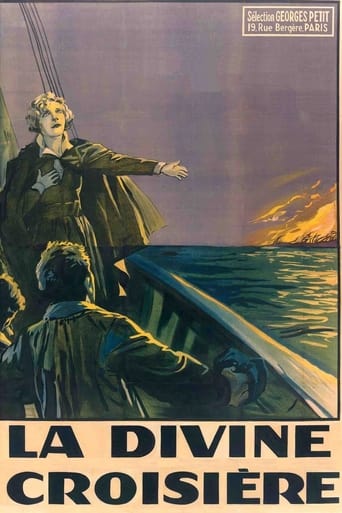
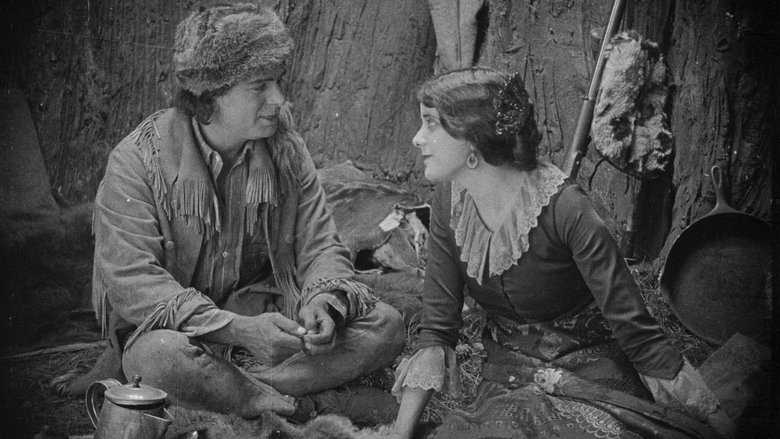
The Half-Breed (1916)
In an attempt to brand himself as a serious actor, the smiling swashbuckler Douglas Fairbanks starred in THE HALF-BREED (1916), a Western melodrama written by Anita Loos and directed with flair by Allan Dwan. Fairbanks stars as Lo Dorman, who has been ostracized from society because of this mixed ethnicity - his Native American mother was abandoned by his white father. When Lo catches the eye of the rich white debutante Nellie (Jewel Carmen), he becomes a target for the racist Sheriff Dunn (Sam De Grasse), who wants to break them up and take Nelli for his own. This love triangle becomes a quadrangle with the arrival of Teresa (Alma Rubens), who is on the run from the law. Through fire and fury Lo must decide who and what he truly loves.
Watch Trailer
Cast


Similar titles
Reviews
Yawn. Poorly Filmed Snooze Fest.
To me, this movie is perfection.
Sadly Over-hyped
hyped garbage
Pretty heavy themes in this 1916 melodrama. I have just been rediscovering Fairbanks' early works and this one caught me by surprise. After watching silent films for almost 50 years, what a joy it is to see them digitally restored. A far cry from the fuzzy 8mm prints of my youth. If I had seen a musty out of focus truncated print of this film, I would have missed much of its joy. Thank you to all who worked so hard to bring this one back to all of us.
There is now a fair understanding of the way that the fatuous Hollywood-centred account of silent cinema with which we all grew up falsified and deformed the history of cinema. The rediscovery of the great European films of the era have very effectively put paid to any such notion. What is perhaps less appreciated is the way that the history of US cinema itself was deformed by the simplistic picture painted of it and its genuine excellencies often obscured. No one has I think suffered more from this than Douglas Fairbanks.Just as Chaplin found himself trapped in his role as "the little tramp" and Pickford imprisoned in eternal gnome-like childhood, so Fairbanks became, whether he would or no, the archetypal swashbuckler. The very selective survival of silent films almost entirely obfuscated the fact that it was not swashbucklers that first made Fairbanks a star but the sophisticated and often highly innovative comedies produced in the earlier period with John Emerson and one of the sharpest satirists of her time, Anita Loos. Now, with so many more available, we have at long last a truer picture of Fairbanks' career.Fairbanks' style of comedy has much in common with that of the great French comedian, Max Linder (whose similarities with Chaplin are almost entirely superficial) and often shows, in its approach to the surreal, the influence of European style. Like Linder, Fairbanks tended to be a bit hit-and-miss (both were experimenters rather than perfectionists in the Chaplin manner) but the great films of this pre-swash period (The Mystery of the Leaping Fish 1916 or When the Clouds Roll By 1919 are my personal favourites) have a quality not really to be found elsewhere in US cinema. In saying this, I do not by any means intend to devalue the swashbucklers (Robin Hood, The Mark of Zorro or The Thief of Bagdad remain classics and are themselves pervaded by the charming nonsensicality of the comedies) but rather to revalue the other Fairbanks that lay for so long ignored.Allan Dwan who had made his way to Griffith's Fine Arts Film Company via a long stint at American Film Manufacturing Company, making mainly westerns and then with the Ince companies at about the time they were gobbled up by Universal. His image of Fairbanks was very much as an action hero and the combination Dwan-Loos that we have in this film is almost a perfect representation of the two ways in which the star was being pulled.Amongst the various Dwan try-outs for Fairbanks was the politically correct western hero rather in the mould of William S. Hart (he and Fairbanks would even make a film entitled The Good Bad Man in 1916). This film is politically correct in another way too. The revisionist approach, with its very overt attack on racism and white supremacism, was not new (it had always been a significant element in the Ince westerns) even if it is here more outspoken than usual. Even if the defence of Native Americans and Mexicans was less controversial in this respect than that of African Americans (and acceptable to Grifith), it was still of consuiderable importance in the face of the resurgence of white supremacism that followed Griffith's Birth of a Nation. The silent presence of an elegant black gambler in the saloon in this film is not, I think, insignificant amongst all the various minorities represented and contrasted with the miserable specimens of the "superior" white man. Similarly the parson's announced sermon on "intolerance" (never delivered) is obviously a nod to Griffith's better angel (several of the cast also appeared in the Griffith film). All in all the message is clear and, if a shade strident, is nonetheless important.With the character of Nellie (Jewel Carmen), with her expensive education, "trained misunderstanding" of music and faultless taste in clothes, a sort of lily-white Lorelei Lee of the West, Loos comes into her own and the balance tips towards satire. The métisse Teresa (Alma Rubens) is on the other hand the free strong-minded female heroine that Loos offers as the counterpart in another political element of the story that invites the audience to see the white male treatment of women as comparable to that of its treatment of minorities.The film is in the end neither the action film that Dwan might have preferred nor the satirical comedy that Loos could have written but a half-breed somewhere between the two. Yet, even if Dwan and Loos resembled each other only in their cynicism - of the three Fairbanks himself was the most idealistic - it does emerge as a surprisingly angry film at a moment when racist and anti-immigrant feeling was at its height in the US and still very much on the rise. The union of the two mixed race characters (Fairbanks and Rubens) is sometimes seen as an evasion of the racial issue but it does serve to underline the message stressed throughout the film that (in direct contradiction of Griffith's prologue to Birth of a Nation and to the fashionable eugenics of the day), it is "whiteness" that represents the problem in US society while the diversity represented by métissage is its redeeming feature.But for Fairbanks personally it was neither the political nor the satirical aspects of the film that pointed the way forward but rather the forest idyll of the lovers with its incidental resemblance to Robin Hood. The swashbucklers, with some inevitability, proved ultimately a dead end for Fairbanks just as the "little girl" films did for his Hollywood queen and it proved impossible for him in later years, despite some not uninteresting attempts, to successfully either develop his potential as a dramatic actor nor to revive the great comedian he had once been. In Hollywood "when the legend becomes fact"......
"The Half-Breed" certainly is one of Douglas Fairbanks' most unusual and daring films. After having made so many hugely successful comedies and achieved the status of a superstar, he felt it was time for him to 'touch' on a subject still VERY controversial back in 1916: the fate of the Native Americans, who, while in the movie they were called 'children of nature', to the white Americans they were still 'children of a lesser God' - they didn't even possess civil rights yet at that time! And Doug not only had the courage to play a 'half-breed' (the mother of our hero here, called Lo Dorman - but in the 'old' restored version Dave Carson for some unknown reason, we'll come to that later on - was an Indian woman), but also to depict in ALL its cruelty the wrongs that were being done to the Indians by the 'white man', and even a romance of the 'half-breed' with a white woman! It was Doug's first drama - and a most provocative one...Unfortunately, it was a box office failure ('conservative' critics had seen to that, warning the audience about the 'immoral' content of the movie...); and unfortunately, after it had been considered lost for decades, the first thing that turned up in the 1980s was only a remnant of the original version, which confuses the viewer completely with its incoherency, and makes us believe that Lo's romance with Nellie (who now was called 'Peggy') would be the happy ending - which it wasn't...The original version had a running time of almost two hours, while the 'restored' version is only a rump of about 50 minutes - leaving out completely the MOST controversial part of Lo's competition with Sheriff Dunn (played by Sam De Grasse, the 'eternal baddie' in almost all of Doug's silent movies) for the favor of Nellie - who, on her part, surely WASN'T the demure, shy girl of pre-WWI USA, but one of the first 'man-eaters', years before the flappers and vamps made their appearance... And the MOST ironical thing of it all is - that Sheriff Dunn is actually Lo's father; and since he's obviously not only jealous, but also ashamed of his 'half-breed' son, he does everything to discredit him among the townsfolk! (And Doug's famous bathing scene almost in the nude - which director Allan Dwan had inserted especially for Doug's then wife Beth, who didn't want her husband to play a 'dirty, filthy character' - is also missing; much to the chagrin of today's female audience, of course...) But FORTUNATELY, in 2013, ANOTHER surviving copy of almost the complete movie was found, which makes us realize the TRUE plot - and the ending, in which, of course, Doug DOESN'T get Nellie (Peggy), but the Mexican dance hall girl Teresa (called 'Dolores' in the restored version); not because he would have been afraid of actually showing an interracial romance come true, but simply because amorous Nellie wasn't his type: he wanted a REAL, loving woman by his side! Anyway, no matter whether you'll only be able to watch the 'rump' version or the REAL restored one - this movie is a GREAT and VERY courageous drama about the 'children of nature', who are being destroyed by the 'white man', his 'civilization' and his 'firewater', and a deeply moving contemplation about the vanishing of the wilderness and the dubious 'triumph' of civilization.
The usual suspects -- star Doug Fairbanks, writers Anita Loos and John Emerson and director Allan Dwan -- try something different from their usual light-hearted romp with social commentary, working from a story by Bret Harte.Unfortunately, the copy screened by the Museum of Modern Art is in poor shape. Only about twenty-five minutes of the one-hour feature could be screened, and the print showed a lot of damage. The titles, when possessed of any humor, are dour and there isn't much of Doug's usual stuntwork -- he clambers around the redwood forests of northern California for a bit and bends a young conifer double a couple of times to spring from one place to another. We do get a bit of beefcake in an early scene, where he is shown, stripped to the waist, but that's about it.The rest is an open attack on racism. Doug, the titular half-breed is trapped in a small, nasty town full of racists who dislike him solely because he is an Indian. Of course, Jewel Carmen and Alma Rubens have yens for him, but besides showing jealousy when Doug is not present, do nothing about it. The genially corrupt individuals who inhabit most of Harte's better known works are not present. Instead, they are selfish, nasty and smug It's difficult to judge the impact of this movie almost a hundred years after it was produced, but over all it looks like an earnest work with some good production values: an attempt to expand Doug's range as a movie star. Judging by the fact that he went back to his usual mode of movie until 1920s' THE MARK OF ZORRO, it almost certainly didn't take. Nor, judging by what remains, should it have.


